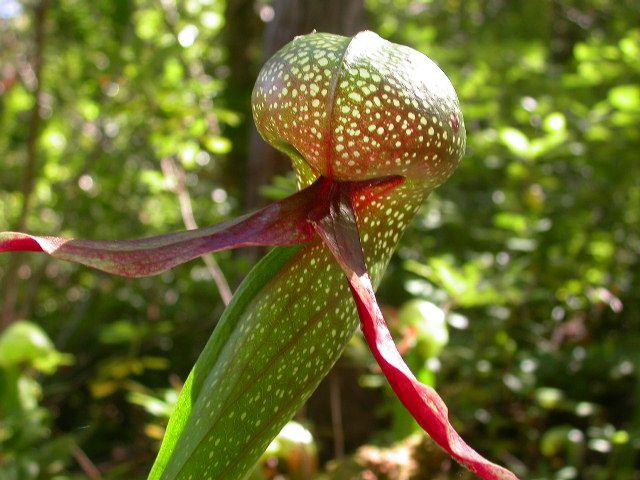
Not venomous, I swear.
Then we have the cobra lily (Darlingtonia californica). It's not a cobra or a lily, but damn if it doesn't look like it could strike at any second. It even has a forked tongue!

D'awwwww!
This instance of mimicry was purely accidental. The cobra lily is not cobra-lethal unless you happen to be a small insect. That 'tongue' is covered with a sweet nectar trail leading directly to the cobra's 'hood' that gives the plant its name. After being lured into the hood, insects find themselves slipping down into the plant's watery bottom. The pool below is spiked with at least one digestive enzyme and the walls surrounding it absorb nutrients just like the plant's roots.
At this point, a few flies have remembered that they possess wings. This gets them out of traps 1 and 2, but trap #3 is, well...invisible.

The cobra lily's walls are translucent. A flying insect will see these fake exits and try each and every one of them, not realizing that the real way out is down. Eventually, it tires, making its attempts to fly utterly pointless. This method is extremely successful - a cobra lily's pool is, more often than not, loaded with dead insects.
That's right. It knows when its prey sleeps.

No comments:
Post a Comment